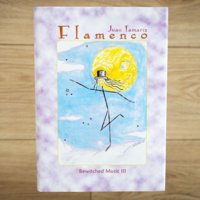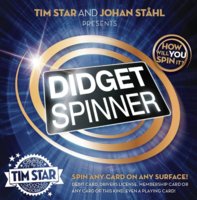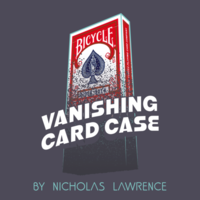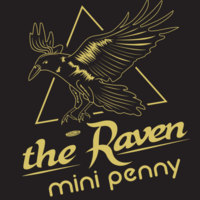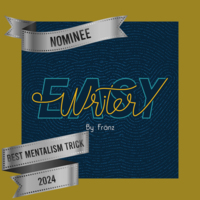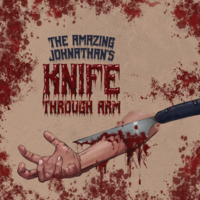Thetalia by Ian Rowland (Instant Download)
A reputation-maker with a GENUINELY SHUFFLED DECK. Without looking at a SINGLE CARD you begin, and look like the god of card-cheats. LEARN INSTANTLY. HIGHLY RECOMMENDED.
| Price: | $9.95 |
"I've been performing it for 25 years" -Ian Rowland
A card trick with NO EXPLANATION.
1. Grab a borrowed, shuffled deck and WITHOUT LOOKING AT A SINGLE CARD, you're ready to begin.
2. You proceed to find aces, deal winning hands, pairs, full-houses, straights and generally cause jaws to drop on the floor.
3. NO DECK SWITCHES AND EASY TO LEARN.
"Plays really strongly for people" -Patrick Redford
"The method is as much fun as the trick" -Ian Rowland
PROFESSIONALS: Explained in-depth for the first time on film, Ian Rowland's MASTERPIECE "Thetalia" will turn you into a god-of-card-cheating (at least that's what your audiences will be left thinking).
Any deck. Anytime. Anywhere. Amazing.
With a running time of 1 hour and 20 minutes, Ian goes into full detail, explaining how he presents this beautiful effect.
ASK HERE
Featured Magic Tricks
4 star 21%
3 star 8%
2 star 8%
1 star 1%

 The most fun you'll ever have performing
Report this review
The most fun you'll ever have performing
Report this review
The routine is a lot of fun. You'll be amazed how well it works every time you perform. It doesn't require a lot of skill, but you'll need to know a couple sleights and productions if you want a smooth-looking performance. And what's more, it's just as much fun to practice as to perform.
The only complaint I have, and it's a minor one at that, is that some of the moves Ian does to produce the cards aren't explained in detail. He does a couple of color changes, a card spring, and a misdirection-based card-to-table move that he never really breaks down. Watching the video a couple times is enough to learn them though. If not, he explains his color changes in detail in his live lecture.

 Thetalia
Report this review
Thetalia
Report this review
Since I like cards — FASDIU style — I was intrigued by the description for Thetalia. And at $4.95, it was not a huge risk to purchase.
Upon seeing the method (viewing a full performance on the demo would more than likely have given it away), I can say only that while routine is no doubt effective as an audience pleaser, the method requires a way of handling the cards that seems out of place and calls attention to itself. True: these "moments" pass quickly, virtually instantaneously, and are easily disguised with patter (indeed Rowland says, correctly, that the engagement with the spectators is what really makes the trick), but the problem is that — by the very nature of the routine; that is, dealing lots of cards — there are quite a few of these "moments."
In all magic, we construct our routines to disguise the method, but when the "method" occurs so many times within the routine, it's hard to believe that a spectator won't see something fishy at some point — even if it's only a vague, cumulative impression at the end that something, somewhere, was was just not quite right.
Rowland does say that even if the spectators suspect something, it won't affect the trick. The performances on the download seem to bear this out: the spectators seem genuinely impressed and entertained (whether or not they may have suspected something, we can't be sure). Thus, while on a macro level the entertainment value is certainly there, perhaps for me, it's a just a matter of style (and lack of ability?): I can't feel comfortable disguising, so many times, what is for me an unusual thing to do with the cards — however small that thing is, and however fleeting it may be each time it is done.

 Just a great "trick" that is really fun to perform
Report this review
Just a great "trick" that is really fun to perform
Report this review
I LOVE this and with an hour of practice to get the reactions I got and the results....I can't wait until I have done this for weeks and months. In fact, this is a wonderful way to just start your practice sessions out. Just run thru it once for yourself before you start practicing your other card tricks.

 Wow
Report this review
Wow
Report this review
This is NOT a jazz routine, this IS a structured routine that you can riff on. The thing that makes this routine great is the better you are with cards, the better the routine is.
Here's the thing... If you're new... You may want to skip this
If you are a little more seasoned and love gambling card routines with a BORROWED shuffled deck. This one might be for you. Plus the price is right and the secret is something special for card guys.
---------------
If you are looking for a good resource on reveals to make this a very magical and special routine, check out the Multiple Revelation Project by Andi Gladwin and Rob James. It's a fantastic DVD that will help a lot.

 A brilliant trick and well worth the cost
Report this review
A brilliant trick and well worth the cost
Report this review
The ad describes it perfectly: use someone else's cards. The spectator shuffles. No switches. No crimps, no breathers, or anything else. No memory, no difficult sleights. (No sleights period, arguably.)
You will deal straights, boats, four of a kind, etc.--but not like Ricky Jay or Richard Turner might. Thetalia relies on two very simple moves (you can throw in display moves, flourishes, and cuts, if you feel the need). From then on, it's up to you. As Rowland says, quite a few times: the fact that this trick is "impromptu" does not mean anything is left to chance. You just need to be flexible.
He recommends--and I can see why--that you practice it alone, just to see how the cards come up, and what you can do with them. The only thing I can think of that might put some people off--you have to be prepared to think on your feet, and you have to want to have fun with the spectator.
Oh, and one other thing: you have to accept the fact that the spectator doesn't know what you intend to do. You have to be able to sell the fact that everything is going according to your plan. Viewed from this perspective, the trick is one big exercise in misdirection--make that direction. You will be directing the spectator's perception of what's going on at all times. What you do, and what the spectator sees, are two very different things.
For something so technically simple to have such a potential for frying the spectator's mind...I'm very glad I bought it.

 weird routine
Report this review
weird routine
Report this review

 Not my kind of trick
Report this review
Not my kind of trick
Report this review
I would have given it only 1 or 2 stars, but some of Ian's handling tips are worth an extra star.

 It's not a routine
Report this review
It's not a routine
Report this review
"WITHOUT LOOKING AT A SINGLE CARD" is a misdirection. You have to glimpse every time, every shuffle, it's jazz magic. You have to fool people around you without method, only with your close up skills and improvisation. It's not a method and it's not a routine, I don't like it.

 Not to bad but needs a little more explanation
Report this review
Not to bad but needs a little more explanation
Report this review
The only reason I give it a 3 stars is because when watching the performance (before buying) a saw a few moves that I wanted to know how they are done (eg: the card popping out of the deck) but those explanations were not covered.
If those explanations were covered I would give this a full 5 stars for $ spent.

 Practice What?
Report this review
Practice What?
Report this review

Act Builder beta











